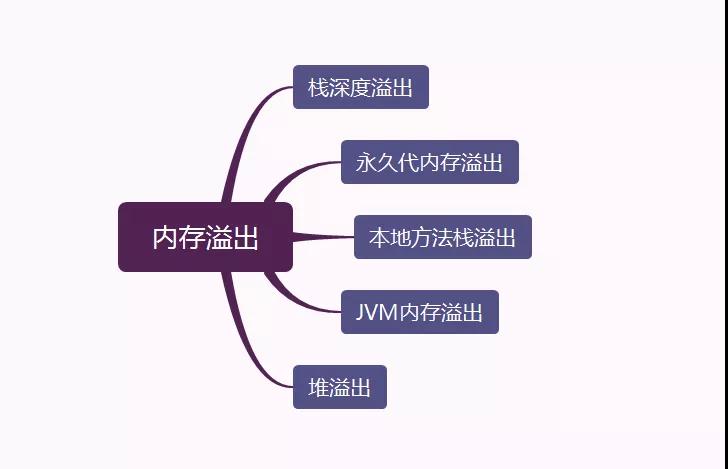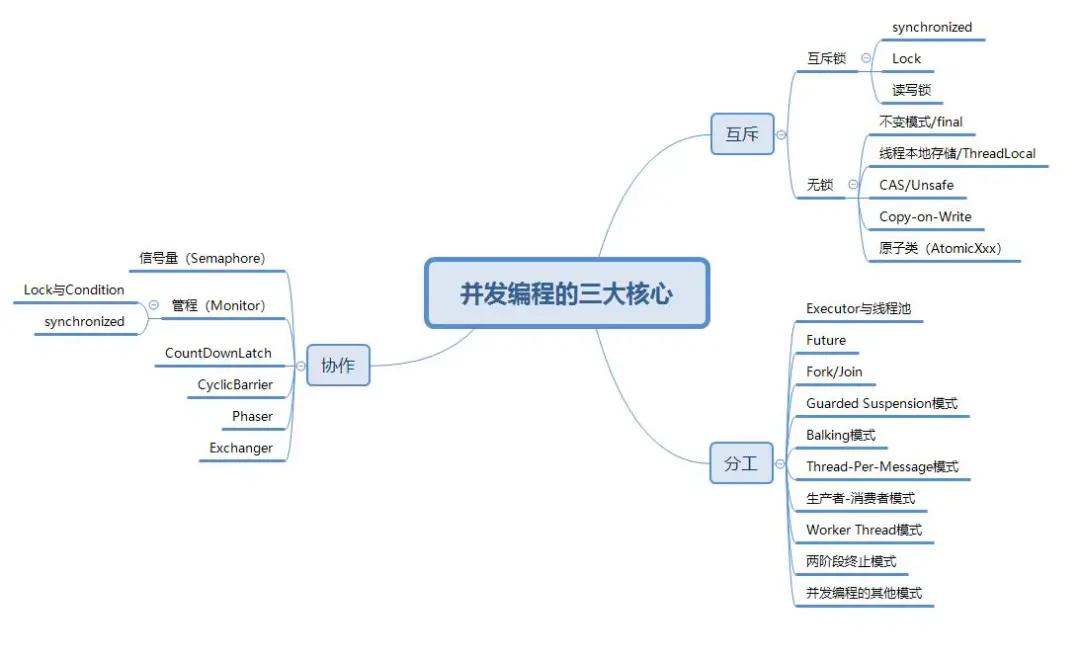10分鐘搞懂各種內存溢出案例!!!
大家好,我是冰河~~
作為程序員,多多少少都會遇到一些內存溢出的場景,如果你還沒遇到,說明你工作的年限可能比較短,或者你根本就是個假程序員!哈哈,開個玩笑。今天,我們就以Java代碼的方式來列舉幾個典型的內存溢出案例,希望大家在日常工作中,盡量避免寫這些low水平的代碼。
我們先來看看今天要介紹哪些內存溢出案例,冰河這里總結了一張圖,如下所示。
說干就干,咱們開始吧!!
定義主類結構
首先,我們創建一個名稱為BlowUpJVM的類,之后所有的案例實驗都是基于這個類進行。如下所示。
- public class BlowUpJVM {
- }
棧深度溢出
- public static void testStackOverFlow(){
- BlowUpJVM.testStackOverFlow();
- }
棧不斷遞歸,而且沒有處理,所以虛擬機棧就不斷深入不斷深入,棧深度就這樣溢出了。
永久代內存溢出
- public static void testPergemOutOfMemory1(){
- //方法一失敗
- List<String> list = new ArrayList<String>();
- while(true){
- list.add(UUID.randomUUID().toString().intern());
- }
- }
打算把String常量池堆滿,沒想到失敗了,JDK1.7后常量池放到了堆里,也能進行垃圾回收了。
然后換種方式,使用cglib,用Class把老年代取堆滿
- public static void testPergemOutOfMemory2(){
- try {
- while (true) {
- Enhancer enhancer = new Enhancer();
- enhancer.setSuperclass(OOM.class);
- enhancer.setUseCache(false);
- enhancer.setCallback(new MethodInterceptor() {
- @Override
- public Object intercept(Object obj, Method method, Object[] args, MethodProxy proxy) throws Throwable {
- return proxy.invokeSuper(obj, args);
- }
- });
- enhancer.create();
- }
- }
- catch (Exception e){
- e.printStackTrace();
- }
- }
虛擬機成功內存溢出了,那JDK動態代理產生的類能不能溢出呢?
- public static void testPergemOutOfMemory3(){
- while(true){
- final OOM oom = new OOM();
- Proxy.newProxyInstance(oom.getClass().getClassLoader(), oom.getClass().getInterfaces(), new InvocationHandler() {
- public Object invoke(Object proxy, Method method, Object[] args) throws Throwable {
- Object result = method.invoke(oom, args);
- return result;
- }
- });
- }
- }
事實表明,JDK動態代理差生的類不會造成內存溢出,原因是:JDK動態代理產生的類信息,不會放到永久代中,而是放在堆中。
本地方法棧溢出
- public static void testNativeMethodOutOfMemory(){
- int j = 0;
- while(true){
- Printer.println(j++);
- ExecutorService executors = Executors.newFixedThreadPool(50);
- int i=0;
- while(i++<10){
- executors.submit(new Runnable() {
- public void run() {
- }
- });
- }
- }
- }
這個的原理就是不斷創建線程池,而每個線程池都創建10個線程,這些線程池都是在本地方法區的,久而久之,本地方法區就溢出了。
JVM棧內存溢出
- public static void testStackOutOfMemory(){
- while (true) {
- Thread thread = new Thread(new Runnable() {
- public void run() {
- while(true){
- }
- }
- });
- thread.start();
- }
- }
線程的創建會直接在JVM棧中創建,但是本例子中,沒看到內存溢出,主機先掛了,不是JVM掛了,真的是主機掛了,無論在mac還是在windows,都掛了。
溫馨提示,這個真的會死機的。
堆溢出
- public static void testOutOfHeapMemory(){
- List<StringBuffer> list = new ArrayList<StringBuffer>();
- while(true){
- StringBuffer B = new StringBuffer();
- for(int i = 0 ; i < 10000 ; i++){
- B.append(i);
- }
- list.add(B);
- }
- }
不斷往堆中塞新增的StringBuffer對象,堆滿了就直接溢出了。
測試案例完整代碼
- public class BlowUpJVM {
- //棧深度溢出
- public static void testStackOverFlow(){
- BlowUpJVM.testStackOverFlow();
- }
- //不能引起永久代溢出
- public static void testPergemOutOfMemory1(){
- //方法一失敗
- List<String> list = new ArrayList<String>();
- while(true){
- list.add(UUID.randomUUID().toString().intern());
- }
- }
- //永久代溢出
- public static void testPergemOutOfMemory2(){
- try {
- while (true) {
- Enhancer enhancer = new Enhancer();
- enhancer.setSuperclass(OOM.class);
- enhancer.setUseCache(false);
- enhancer.setCallback(new MethodInterceptor() {
- @Override
- public Object intercept(Object obj, Method method, Object[] args, MethodProxy proxy) throws Throwable {
- return proxy.invokeSuper(obj, args);
- }
- });
- enhancer.create();
- }
- }
- catch (Exception e){
- e.printStackTrace();
- }
- }
- //不會引起永久代溢出
- public static void testPergemOutOfMemory3(){
- while(true){
- final OOM oom = new OOM();
- Proxy.newProxyInstance(oom.getClass().getClassLoader(), oom.getClass().getInterfaces(), new InvocationHandler() {
- public Object invoke(Object proxy, Method method, Object[] args) throws Throwable {
- Object result = method.invoke(oom, args);
- return result;
- }
- });
- }
- }
- //本地方法棧溢出
- public static void testNativeMethodOutOfMemory(){
- int j = 0;
- while(true){
- Printer.println(j++);
- ExecutorService executors = Executors.newFixedThreadPool(50);
- int i=0;
- while(i++<10){
- executors.submit(new Runnable() {
- public void run() {
- }
- });
- }
- }
- }
- //JVM內存溢出
- public static void testStackOutOfMemory(){
- while (true) {
- Thread thread = new Thread(new Runnable() {
- public void run() {
- while(true){
- }
- }
- });
- thread.start();
- }
- }
- //堆溢出
- public static void testOutOfHeapMemory(){
- List<StringBuffer> list = new ArrayList<StringBuffer>();
- while(true){
- StringBuffer B = new StringBuffer();
- for(int i = 0 ; i < 10000 ; i++){
- B.append(i);
- }
- list.add(B);
- }
- }
- }
寫在最后
最后,附上并發編程需要掌握的核心技能知識圖,祝大家在學習并發編程時,少走彎路。
本文轉載自微信公眾號「冰河技術」,可以通過以下二維碼關注。轉載本文請聯系冰河技術公眾號。








































